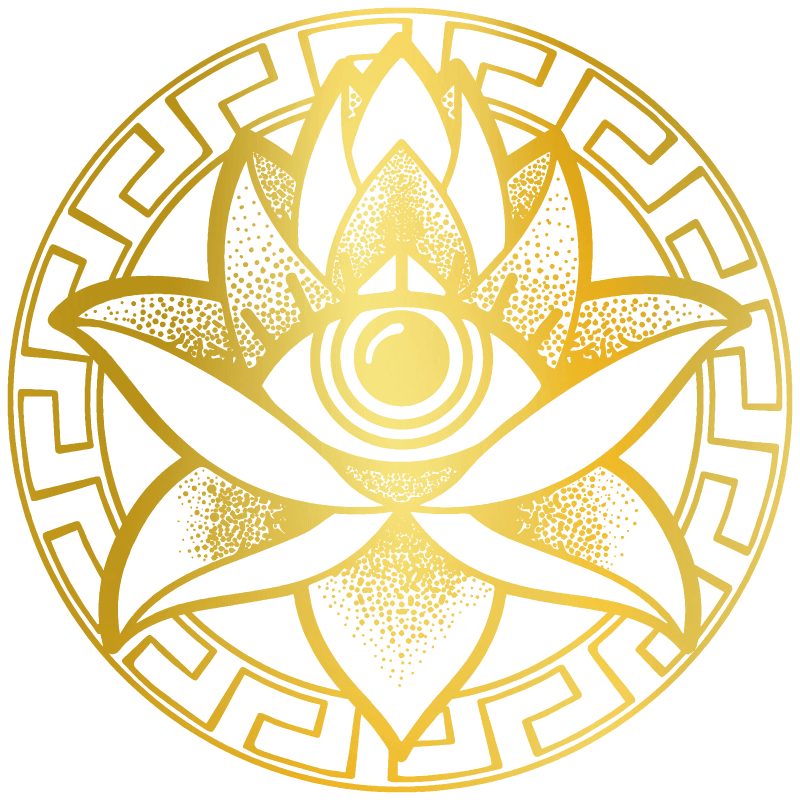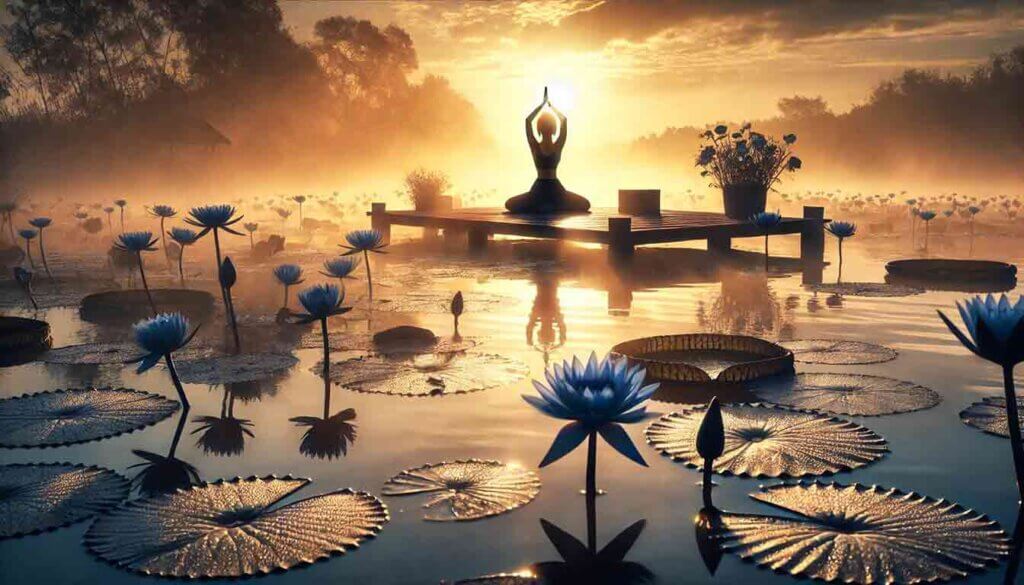Yoga has long been celebrated as a transformative practice that unites body, mind, and breath. Across centuries, practitioners have sought tools to deepen this union and move closer to states of expanded awareness. Among these tools, the Blue Lotus (Nymphaea caerulea) has re-emerged as a gentle yet profound plant ally, offering calm focus, heart-opening qualities, and spiritual resonance. When combined thoughtfully with yoga, Blue Lotus creates a holistic practice that nourishes both physical vitality and inner stillness.
This article explores the history, benefits, and practical guidance for pairing yoga and Blue Lotus, highlighting how they harmonize to align body, breath, and spirit.
The Legacy of Blue Lotus in Spiritual Traditions
The Blue Lotus is not just a botanical curiosity—it is steeped in ancient tradition. In Egyptian mythology, it symbolized rebirth, serenity, and transcendence. Priests, philosophers, and seekers used its calming and euphoric qualities to enter meditative states and connect with the divine.
In yogic terms, Blue Lotus resonates with sahasrara (crown chakra) and anahata (heart chakra), supporting emotional balance and spiritual openness. By softening mental chatter and lifting the spirit, it provides fertile ground for deep yogic practice.
Why Yoga and Blue Lotus Complement Each Other
Pairing yoga with Blue Lotus is not merely about ritual—it is about synergy:
-
Enhanced Relaxation: Blue Lotus calms the nervous system, helping practitioners release tension and ease into postures.
-
Focused Breathwork: Its subtle euphoria sharpens awareness of prana (life force), making pranayama more fluid and embodied.
-
Spiritual Expansion: Both practices encourage surrender, allowing inner stillness and transcendence to surface naturally.
-
Heart-Centered Awareness: Together, they cultivate compassion, acceptance, and self-love, aligning the heart with physical and energetic flow.
Preparing Your Space for Yoga and Blue Lotus Rituals
Creating the right environment magnifies the impact of combining these two practices.
-
Cleanse the Space: Use incense, sage, or essential oils to clear stagnant energy.
-
Set an Intention: Whether it’s emotional release, clarity, or spiritual awakening, define your purpose before beginning.
-
Blue Lotus Preparation: Common methods include tea infusion, vapor, or tincture. Tea is the most grounding option for yoga, offering a gentle onset.
-
Sacred Ambiance: Dim lighting, soft music, and natural elements enhance receptivity.
Recommended Practices for Aligning Body, Breath, and Spirit
Hatha Yoga with Blue Lotus
Slow, deliberate postures combined with Blue Lotus tea create a meditative rhythm. Poses like Balasana (Child’s Pose) and Paschimottanasana (Seated Forward Bend) become portals for deep release.
Pranayama (Breathwork)
Blue Lotus enhances sensitivity to the breath. Practices such as Nadi Shodhana (Alternate Nostril Breathing) and Ujjayi Pranayama (Victorious Breath) feel more expansive, encouraging oxygenation and calming the mind.
Heart-Opening Asanas
Backbends such as Ustrasana (Camel Pose) and Setu Bandhasana (Bridge Pose) align beautifully with Blue Lotus’ heart-centered effects. They allow emotions to surface gently, fostering openness and emotional clarity.
Meditation & Mantra
Sitting in stillness after asana practice while under the subtle influence of Blue Lotus creates fertile ground for dhyana (meditation). Mantras resonate more deeply, and visualization becomes vivid.
The Science of Relaxation: Body and Brain Benefits
Modern studies on meditation and herbal allies suggest overlapping benefits:
-
Stress Reduction: Both yoga and Blue Lotus activate the parasympathetic nervous system, reducing cortisol.
-
Improved Sleep Quality: Relaxation practices and Blue Lotus’ calming alkaloids support healthy sleep cycles.
-
Enhanced Focus: Yoga trains attention through mindful movement, while Blue Lotus adds a layer of cognitive clarity.
-
Emotional Balance: Neurochemical shifts create space for emotional regulation, resilience, and a sense of peace.
Practical Guidelines for a Safe Practice
While Blue Lotus is considered gentle and non-addictive, mindful integration is essential.
-
Dosage Awareness: Start small (one cup of tea) and observe how your body responds.
-
Hydration: Drink water alongside Blue Lotus tea, especially during dynamic yoga sequences.
-
Avoid Overuse: Use Blue Lotus as a supportive ritual, not a daily dependency.
-
Personal Sensitivities: Those pregnant, nursing, or with health conditions should consult a practitioner before use.
Designing a Weekly Yoga & Blue Lotus Ritual
For those wishing to establish consistency, a simple framework may include:
-
Monday – Restorative Yoga & Blue Lotus Tea: Begin the week grounded.
-
Wednesday – Vinyasa Flow with Light Blue Lotus Infusion: Maintain energy while staying mindful.
-
Friday – Pranayama and Meditation with Blue Lotus: Transition into the weekend with clarity.
-
Sunday – Heart-Opening Sequence: Reflect and reset intentions for the week ahead.
This structure balances physical activity, inner stillness, and ritual connection.
The Deeper Symbolism of Union
Yoga means union of body and breath, self and spirit, the finite and the infinite. Blue Lotus symbolizes awakening and transcendence. When united, they remind us that spiritual practices are not about escape but about alignment and anchoring the body while expanding awareness.
By embracing this pairing, practitioners cultivate not only flexibility of the body but also resilience of the heart and clarity of the mind.
Conclusion
The partnership of Yoga and Blue Lotus invites seekers into a practice that is both grounding and transcendent. By combining mindful movement, conscious breath, and the gentle influence of an ancient plant ally, one can step into deeper harmony. This is not about adding complexity, it is about rediscovering simplicity, presence, and alignment.
Through these practices, the body becomes strong, the breath becomes a bridge, and the spirit becomes light. This holistic integration empowers practitioners to live with awareness, compassion, and joy.

